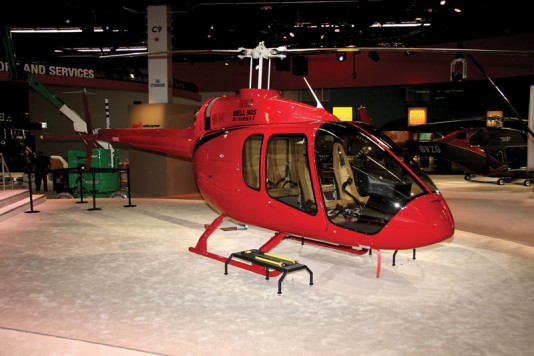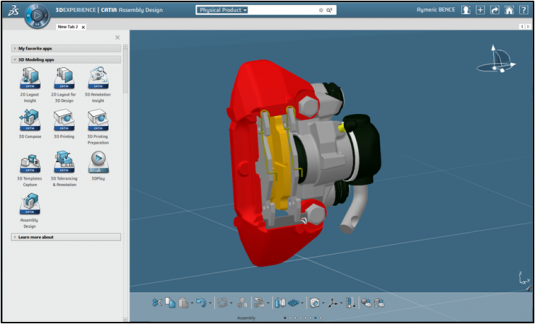Only 400 customers have moved to the latest version of Catia and the complex ecosystem that supports it.
By L. Stephen Wolfe, P.E.
The Catia Operator’s Exchange (COE) is a not-for-profit US organization that helps customers of Dassault Systèmes share information about the CAD software giant’s flagship Catia software. Most of the members are employees of automotive or aircraft manufacturers or their top tier suppliers. A smattering of members work at large consumer products companies such as Proctor & Gamble or Black & Decker. Many have worked with Catia for more than a quarter-century.

COE held its annual Spring Conference and Technifair April 28-30 in Anaheim, California. Approximately 700 attended including customer representatives, Dassault Systèmes employees and resellers, and purveyors of third-party software and services. The annual conference offers Catia customers and potential customers several valuable services:
- Dassault Systèmes product managers brief customers on future product plans and solicit feedback.
- Customers share experiences about new software releases including benefits, challenges, and how they expect to solve them.
- A hands-on lab called COE University lets customers test-drive new software they haven’t yet licensed or installed.
- Independent companies that make complimentary software and hardware products for Catia meet customers and demonstrate their wares.
- The information shared at this event and at on-line webcasts and forums through the year is extremely valuable to anyone planning a Catia installation and deployment.
On February 14, 2014, Dassault Systèmes announced release 2014x of the 3D Experience Platform (3DXP), a set of common software tools and technologies that is supposed to unite the company’s entire product line to facilitate collaboration and advanced systems engineering. The 2014 COE conference offered Dassault Systèmes the first opportunity to describe 3DXP to its premier western-hemisphere customers who must make it work in their organizations.
Benefits to customers
The 3D Experience Platform incorporates at its core Enovia V6 product lifecycle management (PLM) and the Catia V6 CAD software. Catia V6 no longer stores models as part, assembly, and drawing files saved in a file system, but as objects in a database. Because all models are in the database, they can be simultaneously viewed by multiple workers, much like a single web page can be viewed by many people.
File-based CAD software requires people to download files to their local workstations to view them. Various lightweight formats such as 3DXML, Siemens JT, or Adobe PDF minimize the amount of data to be downloaded, but require that derivative files be generated by a PLM system and stored for downloading. When assemblies are complex, the time required to download them can be large. And it is often possible for workers to download and save to their local hard drives copies of files that soon become out of date. The elimination of files, Dassault argues, allows faster access to complex models because only those parts that are of interest need be transmitted to local workstations.
A third benefit to the database architecture of 3DXP is the ability for applications capable of running on the 3D Experience Platform to work together more efficiently. As an example, Dassault Systèmes has enabled its Dymola system-simulation software to drive Catia models. So, for example, a system-level model of an aircraft control system might be able to animate 3D models of the control surfaces using position data from Dymola. In a file-based system, a third-party application might have to ingest the entire set of model files before using the data. Engineers might have to manually separate the needed geometry from the whole model before effecting the transfer.

Dassault Systèmes Philippe Laufer, chief executive of Catia systems, told customers that henceforth all important new developments will be made to the 3D Experience Platform. Catia and Enovia V5 will continue to be supported indefinitely; the most recent V5 release had 227 minor improvements to 37 products. But major innovations will not be made to Catia V5. He urged customers to “move at your own pace [from V5 to V6], but move quickly.”
Customer concerns
Most of the customers’ concerns about 3DXP identified in my November 2013 article still haven’t been addressed. Chief among them is that listed named-user pricing remains too high, so each customer must haggle over discounts.
In addition, customers must budget for installation and testing of new software and must train workers to employ new methods that take advantage of it. Jeff Cloud of Textron’s Bell Helicopter division explained how his company migrated from Catia V4 directly to Catia and Enovia V6 R 2011 without ever having used V5. The move has improved communications between product design and manufacturing engineers and enabled Bell to eliminate 300 legacy systems from its software inventory. Enovia V6 also has simplified the process of generating manufacturing bills from engineering bills of material.
However, the cost of training workers to use the new tools exceeded the investment in software and is not yet complete. Because Bell is using the software on two helicopter programs, it can’t upgrade Catia releases without extensive testing. Consequently, it has taken two years to move from V6 R2011 to V6 R2013. It could take two more years to move to 3DXP.
Furthermore V6 R2011 is missing important capabilities needed for 3D model-based design. Viewers drop notes associated with 3D annotations made in V6 R2011. The problem has been corrected in V6 2013, but in the interim, Bell had to assign workers to correct the viewer models by hand before they were released.
It’s also not clear how 3DXP will work with third-party applications. Most companies employ multiple systems for CAD and CAM and engineering analysis. They have evolved methods for exchanging files that, although cumbersome, do work. It is theoretically possible for such applications to be integrated with the 3DXP database, but Dassault Systèmes isn’t saying much about how this might be done.
The road ahead
Although there have been some notable defections from Catia to Siemens NX, such as Northrop Grumman, Chrysler, and Daimler’s Mercedes Benz unit, most of the established Catia customers probably will adopt the 3D Experience Platform (or whatever it might be renamed in the future) within the next decade or two. Laufer told the COE audience that 400 customers have implemented V6, although many of these instances appear to be evaluation programs in limited production.
Brent Welsh and Greg Dennis, manufacturing engineering managers from Honda’s Marysville, Ohio operations, explained in detail how their company has prepared to deploy Delmia and Enovia V6 for manufacturing engineering. The initiative will enable Honda to evaluate elements of the 3D Experience Platform before converting its Catia user base to the new software. During this interval, Catia V5 will remain Honda’s main CAD software for vehicle design.
The more common approach among COE members appears to be upgrading from Enovia LCA or SmarTeam to Enovia V6. Once the data are converted, the customizations performed, and the users trained, customers could begin switching to Catia V6 on new programs, although few have done so.

The user interface of Catia V6, the construction methods, and the geometry representations are similar to V5. The 2014x release is said to have rearranged the Catia menus, something that CAD systems such as SolidWorks, Creo, and Autodesk AutoCAD and Inventor also have done from time to time, but the basic approach of Catia V6 to design remains the same as V5.

Another challenge for customers will be getting Catia in 3DXP to work with other file-based systems throughout its plants and supply chains. Boeing employees said their extensive library of custom software which automates engineering and manufacturing processes in Catia V5 would need to be converted to run on Catia for 3DXP. This expense is only one reason Boeing currently has no plans to employ Catia on 3DXP, they said.
A manager of a leading aerospace supplier that has adopted Enovia V6 said it must remain with V5 until a majority of the airframe makers have moved forward. At this writing, only Dassault Aviation and Textron Bell Helicopter have aircraft programs that are being fully designed with V6. Other top-tier suppliers face a similar predicament.
According to Laufer, between July and December 2013 Dassault Systèmes had 250 users from 39 customer companies test-drive Catia V6 while connected on the cloud. They modeled 150,000 parts and products in 263 workspaces. These demonstrations suggest that at least some existing Catia customers are interested in exploring the new technology.
For the next few years, the Catia 3D Experience Platform does not appear likely to win many converts outside of the existing Catia community for a number of reasons. First, it’s expensive. An employee of one aerospace supplier said that a small installation of V6 cost more than $33,000 per seat. The supplier spent this money because one of its customers insisted, but absent that pressure, it’s hard to image any medium-sized business would pay such prices.
Catia on the 3D Experience Platform is complex. According to Laufer, it consists of 271 software products, 19 of which were added in the 2014x release. Last fall, Dassault Systèmes claimed it would simplify this thicket of products by offering bundles of products aimed at specific activities. Yet six months later, one is hard pressed to find descriptions of these bundles on the company’s website. Instead the site suggests customers schedule a meeting with a Catia sales representative to “discuss any of your needs.”
Installing and administering a Catia system still doesn’t appear easy. On YouTube, Jens Paulus, a designer of yacht interiors, claims he was able to set up 3DXP in 10 minutes. But at COE, the hands-on user lab was set up on a local server in the next room. Applications such as Enovia 3D Live, an Enovia model browser, crashed, and the simulation for an embedded FEA solver failed to run. Class instructors speculated the problem might have been caused by an inadequate number of licenses.
Given enough skilled administrators and help from Dassault Systèmes engineers, it is possible for Catia V6 to work and be stable in a corporate setting such as Textron or Honda. But smaller firms with fewer users may not wish to engage in this exercise when there are less difficult alternatives.
The Dassault Systèmes sales force for Catia, Enovia, and related PLM products was purchased from IBM in 2010. It is oriented toward large company sales and retains many aspects of the IBM corporate culture: secretiveness, a desire to maintain “account control,” suspicion of outsiders (especially consultants and media representatives), and patronizing marketing messages. Independent dealers for Catia software largely service smaller customers who have no choice but to buy it. One dealer said Dassault Systèmes spends little on marketing programs for Catia in North America.
The culture of the Catia sales organization contrasts sharply with that of Dassault Systèmes’s own SolidWorks organization. SolidWorks has an extensive customer outreach that provides leads to dealers, sells to large and small companies at reasonable prices, and attracts more than 5,000 to its annual customer conference including more than 80 media representatives. Both formulas work but serve different markets. We estimate SolidWorks has more than 400,000 maintenance-paying customers. Laufer told the audience at COE that CATIA has 400,000 users worldwide.
The automotive and aerospace industries are each more than a century old and are mature by any measure. However Catia, Enovia, and related software sold with them are likely to continuing growing faster than the industries they serve as companies expand the use of these products throughout their manufacturing and service organizations. Catia does not need a lot of new customers to maintain its technological edge and financial viability.
The way most companies are likely to employ the 3D Experience Platform is through products designed for the SolidWorks channel, such as Mechanical Conceptual. This product line will itself take years to develop and gain market acceptance. It will also benefit from the technological advances made by the Catia development team.
Join COE if you like Catia
Any Western Hemisphere company that currently employs Catia or is thinking about using it in the future should join COE. It’s a great place to mine a rich lode of technical information and customer experience. Members must pay annual dues and a fee for attending the annual conference. But neither individuals nor corporations are required to be Catia licensees to join this volunteer-run organization. Visit coe.org for membership information.
L. Stephen Wolfe, P.E. is a contributing analyst for Jon Peddie Research. He is a recipient of The CAD Society Industry Lifetime Achievement Award.





